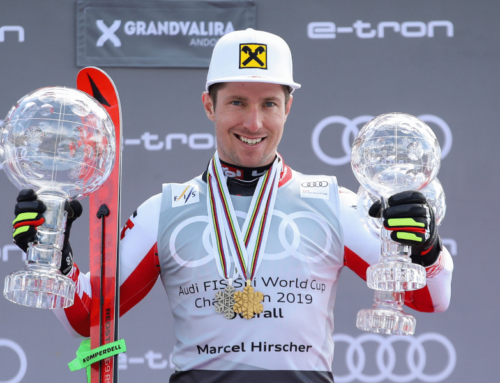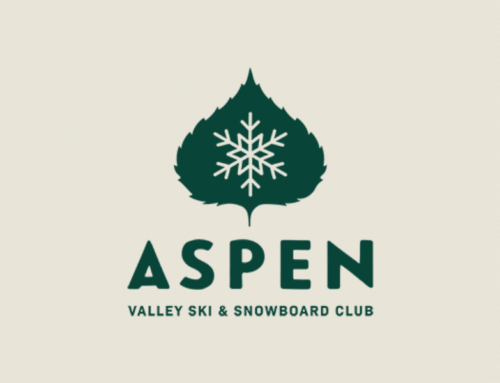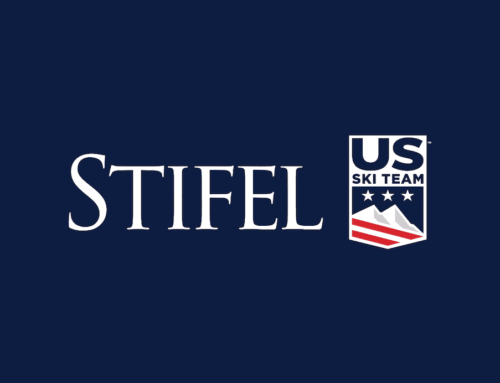2-run sprint downhill headlines Aspen spring series
The second annual FIS spring series races hosted by Aspen Valley Ski Club (AVSC) at Aspen Highlands culminated on Wednesday featuring a pair of men’s and women’s two-run sprint downhills, as well as men’s and women’s super G and men’s giant slalom. The goal of the event, held at the club’s recently revamped Stapleton Training Center, is to attract pacesetting talent while catering to younger, less-experienced speed skiers.
“This is the second year we’ve done it and we hope it becomes a tradition,” said Walt Evans, director of excellence for AVSC. “For those young athletes who haven’t had much downhill, this track is just perfect for them.”
Officials flipped the top 15 after the first run due to the relatively small field, which was significantly stronger on the men’s side of the competition with several national team participants from the U.S. and Canada.
Canadian Jeffrey Frisch, the 2015 NorAm super G champ, claimed the first of two men’s downhills with a two-run combined time of 2 minutes, 13.93 seconds. He was followed closely by the newly crowned U.S. national super G champ, Drew Duffy, in second, while Bryce Bennett rounded out the podium in third. In the second event, Duffy was replaced by Samuel DuPratt in the second-place position, while Frisch and Bennett repeated in first and third.
In the women’s downhill, Ski Club Vail’s Rachael DesRochers, also of the National Training Group (NTG), laid down the winning combined time of 2 minutes, 23.13 seconds. She was followed by AVSC’s own Galena Wardle (NTG), as SSVC’s Lucia Bailey rounded out the podium in third. In the latter event, Wardle triumphed on her home hill, followed by Bailey in second and AVSC’s Katy Harries in third.
“In order to run the downhill in two runs, we needed to drop it down from the 460-meter start. So we start it at 424 meters, and that makes it legal for FIS two-run downhill, which was sweet with those long times,” said Evans. “I think it helps to equalize the advantages that top national team athletes have with their equipment. Coming out of two starts, it gives some of those younger athletes with not-as-good equipment an opportunity to stay closer to the winner.”
“It’s not something you see very often but it’s something you may see a lot more because the enthusiasm for the event was huge,” said AVSC Alpine Race Director Pat Callahan.
The event partially overlapped with the Western Region FIS Elite Spring Series at Sun Valley Resort.
“The three regions obviously all want to capture a spring series so they can have their homegrown U.S. Ski Team athletes there to provide pace or provide opportunity for the juniors,” said Evans. “We really need to bring more focus to this series so the right athletes have the opportunity to score and compete here in Aspen on our venue. We are planning to keep this spring series in place, even though there is a good chance we’ll be hosting the NorAm Cup Finals as a (World Cup Finals) test event next March.”
The Stapleton Training Center at Aspen Highlands enjoyed a major two-phase overhaul prior to the last two seasons. The venue now boasts six FIS homologations: two slalom, two GS, one super G and one downhill, complementing the homologations on Ajax and Buttermilk.
The Stapleton venue was up and running this fall by Nov. 13, hosting speed training as early as Nov. 20. The Highlands slope also played host to several elite national teams, including Norway, Austria and Switzerland, for both speed and tech training in the run-up to the World Alpine Ski Championships in Beaver Creek.
Despite one of the warmest springs in recent memory, this week’s events went off without a hitch.
“We were very fortunate this year in that we had cold temperatures in November, which allowed us to blow almost two million gallons of water and make exactly the quality and density of snow that we wanted,” said Evans.
“The feedback we were receiving was, ‘I don’t know how you guys pulled off a speed series this time of year,’” added Callahan. “It was pretty hard to do as it was getting up into the 60s every day, but the snow held up amazingly well. The density was perfect and snow, when I came down on the last day of downhill, was in better condition than when we set the course two days before. The snow was perfect the whole time.”
While there is currently an ongoing national discussion about selecting and advancement based more on slalom and giant slalom criteria, the former USSA Sport Development Director, Evans, says AVSC plans to stay the course in its emphasis on speed.
“Here in Aspen, we have three internationally homologated downhills. We have three courses that provide a different set of environments, a progression for our athletes. We are going to continue to train speed elements and compete in super G and downhill. We continue to think that speed skills are essential to athlete development.”





















